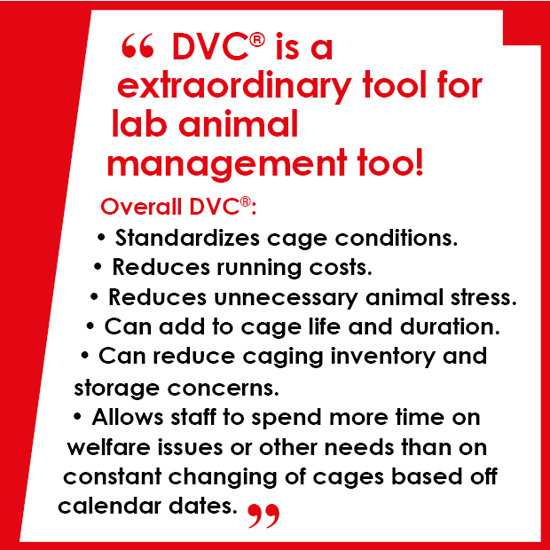
The current version of the Tecniplast website doesn't match your region. Please visit your local website to find information and offerings specific to your country.

The current version of the Tecniplast website doesn't match your region. Please visit your local website to find information and offerings specific to your country.

 One of the most important expert on home cage monitoring and moderator of an interesting and successful seminar at FELASA titled “Better research through better reporting and reproducibility”
One of the most important expert on home cage monitoring and moderator of an interesting and successful seminar at FELASA titled “Better research through better reporting and reproducibility”
DVC®, the Digital Ventilated Cage system from Tecniplast, the best Home cage monitoring system on the market, has been one of the most important attraction at the recent Felasa Conference in Prague.
Dr Hasenau, taking inspiration from the presentations at your Seminar, what are some current challenges in animal experiments that automated cage monitoring can help address?
How do these study results showcase the digital individually ventilated cage system? (ie, how do the results show this technology can improve animal experiments?)
 Presentations suggested there’s a broader implication of a complete lack of fully understanding animal behavior data in general. Can you elaborate on this bigger issue?
Presentations suggested there’s a broader implication of a complete lack of fully understanding animal behavior data in general. Can you elaborate on this bigger issue?
What types of research could benefit from automated cage monitoring?
In general, all research that is interested in animal locomotion, ranging from neuroscience to oncology.
Can you talk a bit about the data component and the software toolbox developed for DVC and explained at the Seminar? How computational demanding is it to run in a facility?
To support the analysis of raw data collected by the DVC®, Tecniplast developed a cloud platform called DVC® Analytics, which currently implements 2 metrics:
• Average - Provides the average of the raw data for each electrode; it can be used to:
• Activation - Measures activity within the cage by capturing animal movements. It can be used to:
Are there other metrics you know Tecniplast plan to implement in DVC® Analytics in short term?
Yes! As for example:
• Single mouse tracking based for:
• Occupational metric for:
• Running wheel data collection.
• Activity bursts.
• Turning preferences.
• Activity Disruption Index.
• Dark/Light Activity Patterns.
• Anomaly Detection.
 The above points make the DVC® system a fantastic tool for Researchers. To what extend does the DVC® also offer improved efficiency in terms of time and manpower required for animal care?
The above points make the DVC® system a fantastic tool for Researchers. To what extend does the DVC® also offer improved efficiency in terms of time and manpower required for animal care?
Correct! DVC® is a extraordinary tool for lab animal management too!. Overall DVC®:
In few words DVC improves efficiency in terms of:
Leopoldo Zauner – Marketing Director